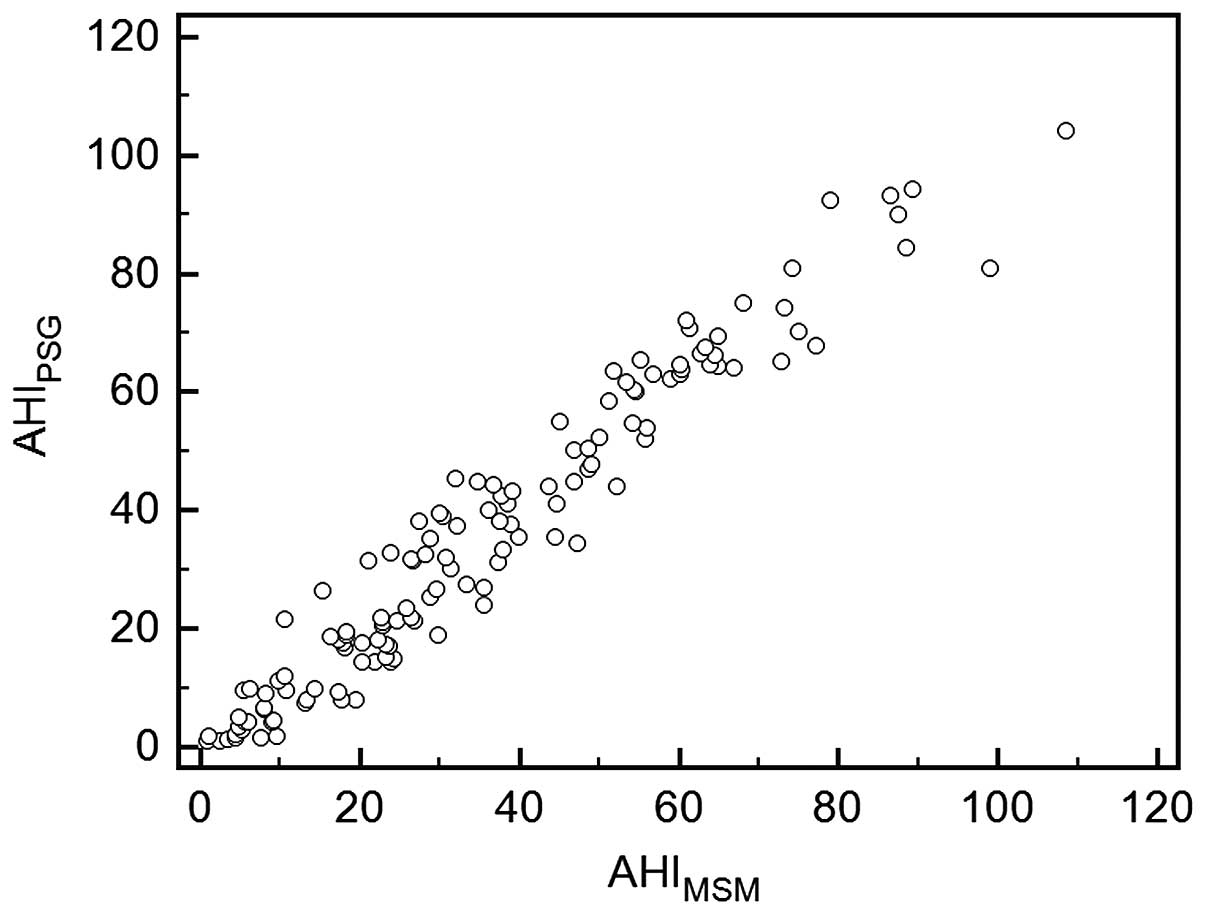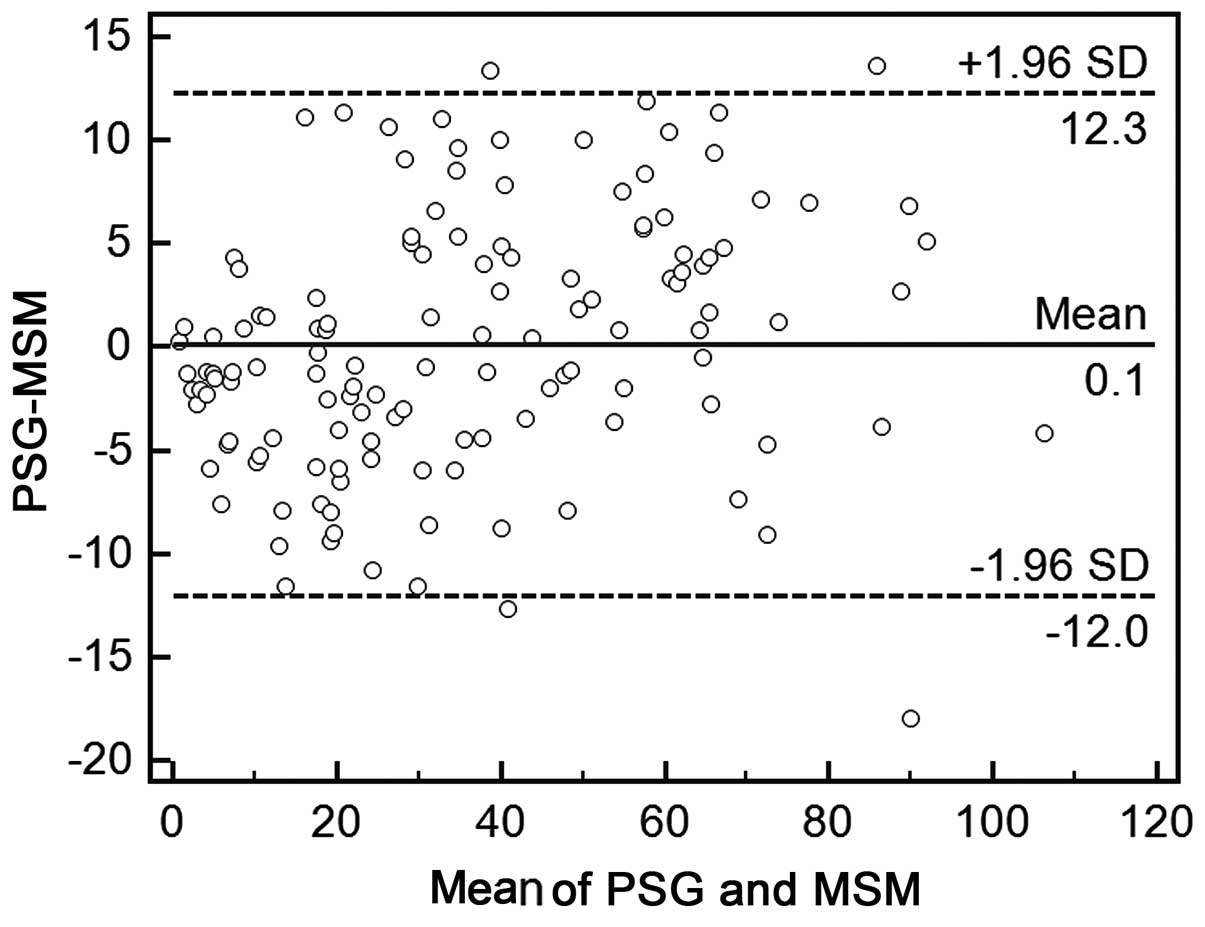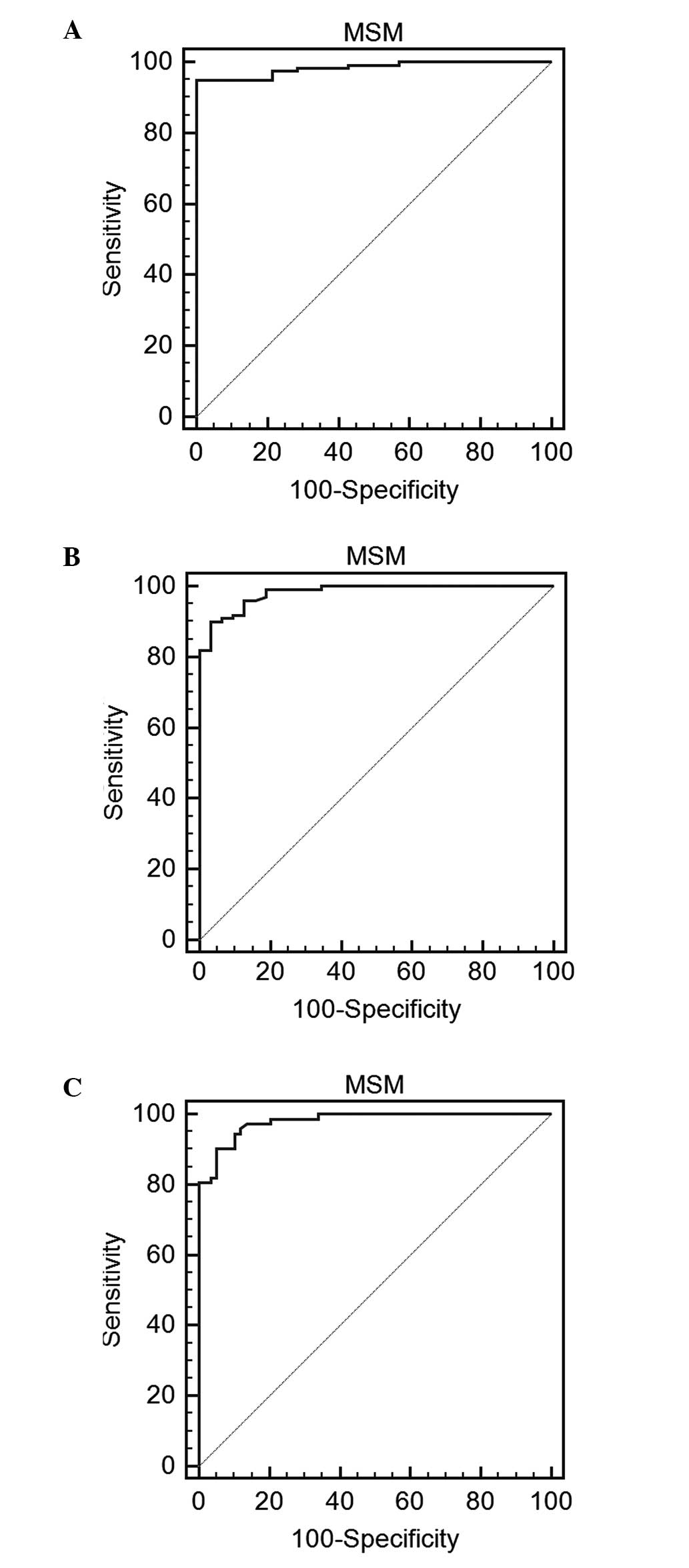|
1
|
Young T, Palta M, Dempsey J, Skatrud J,
Weber S and Badr S: The occurrence of sleep-disordered breathing
among middle-aged adults. N Engl J Med. 328:1230–1235. 1993.
View Article : Google Scholar : PubMed/NCBI
|
|
2
|
Pepin JL, Borel AL, Tamisier R, Baguet JP,
Levy P and Dauvilliers Y: Hypertension and sleep: Overview of a
tight relationship. Sleep Med Rev. 18:509–519. 2014. View Article : Google Scholar : PubMed/NCBI
|
|
3
|
Aurora RN and Punjabi NM: Obstructive
sleep apnoea and type 2 diabetes mellitus: A bidirectional
association. Lancet Respir Med. 1:329–338. 2013. View Article : Google Scholar : PubMed/NCBI
|
|
4
|
Ali SS, Oni ET, Warraich HJ, Blaha MJ,
Blumenthal RS, Karim A, Shaharyar S, Jamal O, Fialkow J, Cury R, et
al: Systematic review on noninvasive assessment of subclinical
cardiovascular disease in obstructive sleep apnea: New kid on the
block! Sleep Med Rev. 18:379–391. 2014. View Article : Google Scholar : PubMed/NCBI
|
|
5
|
Marshall NS, Wong KK, Cullen SR, Knuiman
MW and Grunstein RR: Sleep apnea and 20-year follow-up for
all-cause mortality, stroke, and cancer incidence and mortality in
the Busselton Health Study cohort. J Clin Sleep Med. 10:355–362.
2014.PubMed/NCBI
|
|
6
|
Hoyos CM, Melehan KL, Liu PY, Grunstein RR
and Phillips CL: Does obstructive sleep apnea cause endothelial
dysfunction? A critical review of the literature. Sleep Med Rev.
20:15–26. 2015. View Article : Google Scholar : PubMed/NCBI
|
|
7
|
Stevenson MR, Elkington J, Sharwood L,
Meuleners L, Ivers R, Boufous S, Williamson A, Haworth N, Quinlan
M, Grunstein R, et al: The role of sleepiness, sleep disorders, and
the work environment on heavy-vehicle crashes in 2 Australian
states. Am J Epidemiol. 179:594–601. 2014. View Article : Google Scholar : PubMed/NCBI
|
|
8
|
Rodenstein D: Sleep apnea: Traffic and
occupational accidents-individual risks, socioeconomic and legal
implications. Respiration. 78:241–248. 2009. View Article : Google Scholar : PubMed/NCBI
|
|
9
|
Yang EH, Hla KM, McHorney CA, Havighurst
T, Badr MS and Weber S: Sleep apnea and quality of life. Sleep.
23:535–541. 2000.PubMed/NCBI
|
|
10
|
Xu H, Zheng X, Jia W and Yin S:
Chromatography/mass spectrometry-based biomarkers in the field of
obstructive sleep apnea. Medicine (Baltimore). 94:e15412015.
View Article : Google Scholar : PubMed/NCBI
|
|
11
|
Strollo PJ Jr and Rogers RM: Obstructive
sleep apnea. N Engl J Med. 34:99–104. 1996. View Article : Google Scholar
|
|
12
|
Iber C, Ancoli-Israel S, Chesson AL and
Quan SF: The AASM manual for the scoring of sleep and associated
events: rules, terminology and technical specifications. 1st.
American Academy of Sleep Medicine; Westchester, IL: 2007
|
|
13
|
Zhang QF, Tong YF, She CP, Zhang XR, Song
W, Wang LM and Cheng CJ: Comparative analysis of polysomnography
and micro-sensitive mattress-sleep monitor used for obstructive
sleep apnea hypopnea syndrome. Zhonghua Er Bi Yan Hou Tou Jing Wai
Ke Za Zhi. 45:1014–1019. 2010.PubMed/NCBI
|
|
14
|
Agatsuma T, Fujimoto K, Komatsu Y,
Urushihata K, Honda T, Tsukahara T and Nomiyama T: A novel device
(SD-101) with high accuracy for screening sleep apnoea-hypopnoea
syndrome. Respirology. 14:1143–1150. 2009. View Article : Google Scholar : PubMed/NCBI
|
|
15
|
Tsukahara M, Sakao S, Jujo T, Sakurai T,
Terada J, Kunii R, Tanabe N and Tatsumi K: The accuracy and
uncertainty of a sheet-type portable monitor as a screening device
to identify obstructive sleep apnea-hypopnea syndrome. Intern Med.
53:1307–1313. 2014. View Article : Google Scholar : PubMed/NCBI
|
|
16
|
Kobayashi M, Namba K, Tsuiki S, Nakamura
M, Hayashi M, Mieno Y, Imizu H, Fujita S, Yoshikawa A, Sakakibara H
and Inoue Y: Validity of sheet-type portable monitoring device for
screening obstructive sleep apnea syndrome. Sleep Breath.
17:589–595. 2013. View Article : Google Scholar : PubMed/NCBI
|
|
17
|
Huang XY, Li H, Xu XM and Wang LX:
Mitochondrial DNA mutation screening of male patients with
obstructive sleep apnea-hypopnea syndrome. Exp Ther Med. 8:519–524.
2014.PubMed/NCBI
|
|
18
|
Margallo VS, Muxfeldt ES, Guimarães GM and
Salles GF: Diagnostic accuracy of the Berlin questionnaire in
detecting obstructive sleep apnea in patients with resistant
hypertension. J Hypertens. 32:2030–2037. 2014. View Article : Google Scholar : PubMed/NCBI
|
|
19
|
Ha SC, Lee DL, Abdullah VJ and van Hasselt
CA: Evaluation and validation of four translated Chinese
questionnaires for obstructive sleep apnea patients in Hong Kong.
Sleep Breath. 18:715–721. 2014. View Article : Google Scholar : PubMed/NCBI
|
|
20
|
Xu H, Song W, Yi H, Hou L, Zhang C, Chen
B, Chen Y and Yin S: Nocturnal snoring sound analysis in the
diagnosis of obstructive sleep apnea in the Chinese Han population.
Sleep Breath. 19:599–605. 2015. View Article : Google Scholar : PubMed/NCBI
|
|
21
|
Santos-Silva R, Sartori DE, Truksinas V,
Truksinas E, Alonso FF, Tufik S and Bittencourt LR: Validation of a
portable monitoring system for the diagnosis of obstructive sleep
apnea syndrome. Sleep. 32:629–636. 2009.PubMed/NCBI
|
|
22
|
Nagappa M, Liao P, Wong J, Auckley D,
Ramachandran SK, Memtsoudis S, Mokhlesi B and Chung F: Validation
of the stop-bang questionnaire as a screening tool for obstructive
sleep apnea among different populations: A Systematic review and
meta-analysis. PLoS One. 10:e01436972015. View Article : Google Scholar : PubMed/NCBI
|
|
23
|
Xu H, Song W, Yi H, Hou L, Zhang C, Chen
B, Chen Y and Yin S: Nocturnal snoring sound analysis in the
diagnosis of obstructive sleep apnea in the Chinese Han population.
Sleep Breath. 19:599–605. 2015. View Article : Google Scholar : PubMed/NCBI
|
|
24
|
Guerrero A, Embid C, Isetta V, Farre R,
Duran-Cantolla J, Parra O, Barbé F, Montserrat JM and Masa JF:
Management of sleep apnea without high pretest probability or with
comorbidities by three nights of portable sleep monitoring. Sleep.
37:1363–1373. 2014.PubMed/NCBI
|
|
25
|
Sunwoo B and Kuna ST: Ambulatory
management of patients with sleep apnea: Is there a place for
portable monitor testing? Clin Chest Med. 31:299–308. 2010.
View Article : Google Scholar : PubMed/NCBI
|
|
26
|
Salmi T, Partinen M, Hyyppä M and Kronholm
E: Automatic analysis of static charge sensitive bed (SCSB)
recordings in the evaluation of sleep-related apneas. Acta Neurol
Scand. 74:360–364. 1986. View Article : Google Scholar : PubMed/NCBI
|













